Books
Books

Time Suspended
Herman Asselberghs, Els Opsomer and 1 more
The first thing a traveller has to learn in Palestine is to wait: the Palestinians have been doing it for more than 50 years. In the refugee camps in the Gaza Strip and on the West Bank, they have been waiting for permission to return ever since the Nabka, the catastrophe of 1948, when they were driven out of their houses and away from their land.
In November 2002, the Brussels-based authors of Time Suspended went on a ten-day visit to Palestine. Like most, everything they knew of the country came from media. They discovered a complex and intricate society that could not be summed up in a soundbite. The many full-bleed images of Palestine presented here (many of them depict a somewhat deserted, laid-back, sleepy, place) challenge years of media-tainted observation and truly give insight into the daily lives of its inhabitants.
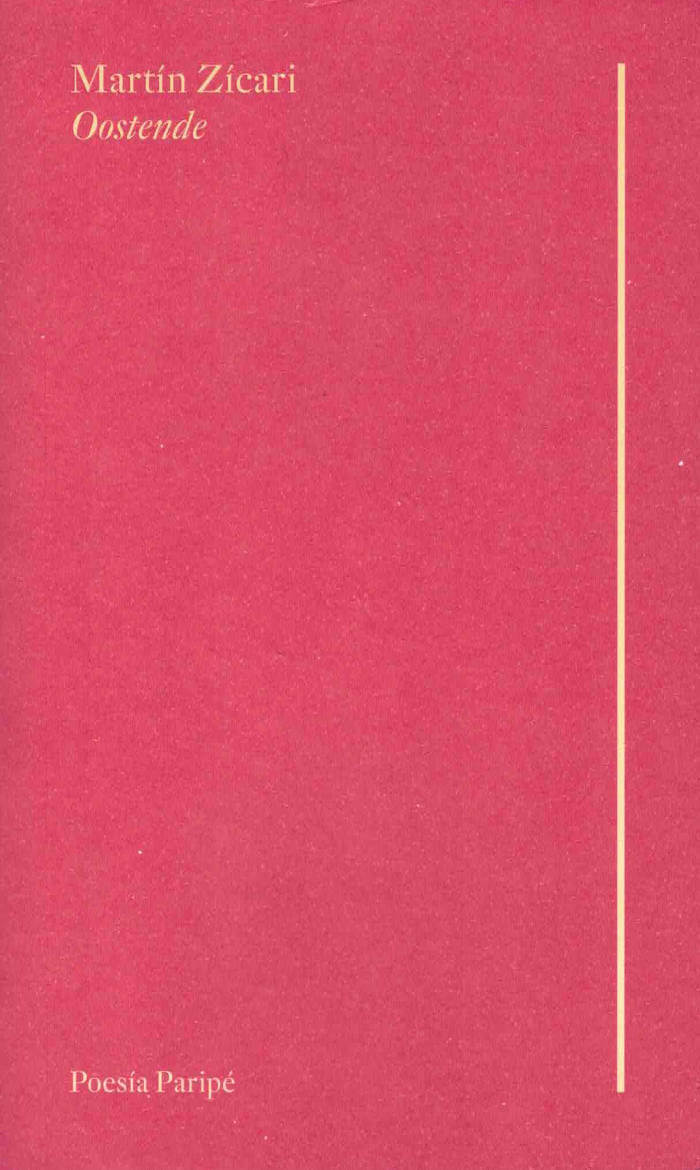
Oostende
Oostende is a book about displacement and the sometimes-overwhelming internal monologue we live with. In between poetry, diary and novel, the book reflects on Zicari’s life in Buenos Aires and Belgium, as he navigates work fragility, friendship, sex and love, migration and the fiction laying behind everyday actions and life changing decisions.
Zícari's portrayal of his private life is far from the domain of the concrete, instead he ventures into the uncontrollable production of fantasies that sustain his inner discourse. It is around this dichotomy between the real and the imaginary, the tension between the experienced and the illusion, that Martín Zícari builds a book sustained in orality and proximity.
Martín Zícari, PhD, is a writer and producer based in Brussels. He has published poetry collections such as "Oostende" (Paripé Books, Madrid, 2023), "Del Príncipe Azul al Hombre Invisible en una Semana" (Editorial Municipal de Rosario, Argentina, 2018), and "Pequellpu" (LUMA Foundation, Switzerland, 2015), as well as the short novel "Scalabritney" (Entropia, Argentina, 2014), among others. His research has been featured in scientific journals such as Performance Research, Memory Studies, and the Journal of Latin American Cultural Studies.

The (Fair) Kin Arts Almanac
The Fair Kin Arts Almanac is made with the voices of more than 130 artists, writers, and activists spinning their thoughts and experiences into 12 chapters around a year. Surprising perspectives, recipes, sound practices, and reflections around ecology, parenthood, the need to rest in a life that never stops, the urgency for space and infrastructure for artists, redistribution of resources, accessibility of the sector, artistic involvement in politics and much more.
The FAIR KIN ARTS ALMANAC is a circular book, filled with perspectives, recipes, astrological wisdom, ideas, games, proposals and in depth reflections around topics of social political relevance. For the Arts and beyond.
The book was edited by a team of 13 editors that in turn each worked with artists, art workers, writers and academics. Chapters range from politics, making space, education, parenthood, accessibility, ecology, mutuality, rest, migration, redistribution, property & open source and relationality.

Greasepaint
Set against a backdrop of 1950s New York, this experimental novel follows an ensemble cast of all-singing, all-dancing butch dykes and Yiddish anarchists through eternal Friday nights, around the table, and at the bar.
In one of many bars, Frankie Gold sings while Sammy Silver plays piano after a day job at the anarchist newspaper. The Butch Piano Players Union meets in the corner next to the jukebox. Laur smokes on the back steps, sweaty thigh to thigh with Vic. Frankie's childhood sweetheart, Lily, turns up at yet another bar to see a second Sammy play every Friday night. And before all that, there's always dinner at Marg's. Fabulated out of oral histories, anthologies, as well as the fiction of the butch-femme bar scene and Yiddish anarchist tradition, Greasepaint is a rollicking whirlwind of music and politics—the currents of community embodied and held inside the bar.

Martin Wong: Footprints, Poems, and Leaves
Self-published in 1968, Footprints, Poems, and Leaves collects dozens of poems written by Martin Wong between 1966 and 1968. Hand-written in a signature calligraphic style that he was just beginning to develop, the poems ebb and flow visually across the page, much like the fluctuating characters, scenes, and moods that inhabit them. This was Wong’s first book of poetry and it contains a double cover showcasing intricate drawings of skeletal angels and other tableaux, as well as a folded, looseleaf broadsheet containing two poems and a drawing of a boney leaf.
The poems were written during a relatively free period for the artist, shortly after he dropped out of Berkeley and began exploring San Francisco at the height of the hippy movement. The poems range from surrealist and pastoral descriptions of the urban subculture that surrounded him to downtrodden, travel-weary biographical entries that are both lonely and tender. Footprints, Poems, and Leaves functions like a journal capturing Wong’s tumultuous life in this period, which included being arrested at a queer, drug-fueled house party (along with Rudolf Nureyev and Dame Margot Fonteyn) and a stay in a mental institution in late 1967 and early 1968. Around the time of the book’s publication, Wong enrolled in Humboldt State University to finish his degree, beginning a new chapter for the artist.
Despite the dark backdrops of many of the works, the writing displays a playfulness with form and language and a sense of humor that can be seen throughout Wong’s later work as well. Altogether, Footprints, Poems, and Leaves creates a rich tapestry of visual poetry that is both a product of its time and the budding artistic mind of a young Martin Wong.

Darkening Blackness: Race, Gender, Class, and Pessimism in 21st-Century Black Thought
The concept of Afropessimism does not refer to Black people, but rather to the likelihood of white society overcoming its own negrophobia, and to a radical distrust in white narratives of inclusivity. What if the ideas and reforms we regard as progressive were just the new and shiny face of racism? In the time of Black Lives Matter, the unswerving dehumanization and killing of Black people form the bedrock of our civilization. But a vast anti-Black collective feeling also manifests itself as a more insidious shared unconscious, hidden from view by the doctrines we deem as emancipatory. This book challenges the simplistic and pacifying aspects of current African American thought. It puts forward alternatives to intersectionality, poststructuralism, and radical democracy, which are often prioritized in the Black analysis of race, gender, and class.
Accessible, historically informed, and politically alert, this book offers a critical analysis of the groundbreaking theories and strategies that radically reimagine the future of Black lives throughout the world.
Norman Ajari is a lecturer in Francophone Black Studies at the University of Edinburgh.

Wrong Norma
Published here in a stunning edition with images created by Carson, several of the twenty-five startling poetic prose pieces have appeared in magazines and journals like The New Yorker and The Paris Review.
As Carson writes: “Wrong Norma is a collection of writings about different things, like Joseph Conrad, Guantánamo, Flaubert, snow, poverty, Roget’s Thesaurus, my Dad, Saturday night. The pieces are not linked. That’s why I’ve called them ‘wrong.’”

Mandible Wishbone Solvent
Brooklyn-based poet Asiya Wadud's fifth collection of poetry, Mandible, Wishbone, Solvent, engages migration, climate change, race, sexuality, and art-though not necessarily in that order-with a dynamic urgency and graceful restraint held in balance by a deep literary investment in the historical aesthetics of abstraction.
Punctuated by images of Wadud's own original art, the poems and prose of Mandible, Wishbone, Solvent offer an indirect meditation of the concepts of the drift ("Embedded in the act of drift can be the prior commitment or desire against drifting") and the isthmus ("An isthmus is a passageway, a threshold, underbrush, thicket, and deliverance"). Wadud constructs a latticework through which language circulates and creates new patterns that probe the natural world's edges, fissures, gaps, and seams. Further, the lyric poems suggest a relationship between speaker and environment that yearns to invert or dissolve the subject-object divide, creating instead an isthmus that joins and allows a drifting between them.

A Toast to St Martirià
A Toast to St Martirià is an improvised speech given by the cult Catalan filmmaker Albert Serra at the St Martirià fiesta in Banyoles, the town of his birth. Transmitting his subversive attitude and impulsive lust for life, it is a journey through his formative years and early relationships – established in the nightlife of his hometown – that have shaped his particular conception of cinema, art and life. ‘Cinema should be this, making perception of time and space more intense.’
Translated by Matthew Tree
Afterword by Alexander García Düttmann
The Catalan artist and filmmaker Albert Serra was born in 1975. His films usually depict European myths and literature. In 2001, he co-founded the production company Andergraun Films. His Honor of the Knights was selected by Cahiers du Cinéma as one of the ten best films of 2007. For Story of My Death, Serra was awarded the Golden Leopard at the Locarno Film Festival in 2013. For The Death of Louis XIV, Serra received the Prix Jean Vigo in 2016. Pacifiction was nominated for the Palme d’Or at the Cannes Film Festival in 2022.
Matthew Tree was born in London in 1958. He taught himself Catalan in 1979 and moved to Catalonia in 1984. Since then he has published nine works of fiction and non-fiction written in Catalan, and five written in English. He writes regular columns for Catalonia Today magazine in English and El Punt Avui newspaper in Catalan. He has translated works by Jordi Puntí, Maria Barbal, Monika Zgustová, Joel Joan, Marta Marín-Dòmine and Albert Serra, among others. Two of his English novels, Just Looking and Almost Everything, will appear in Catalan translation at the start of 2025.
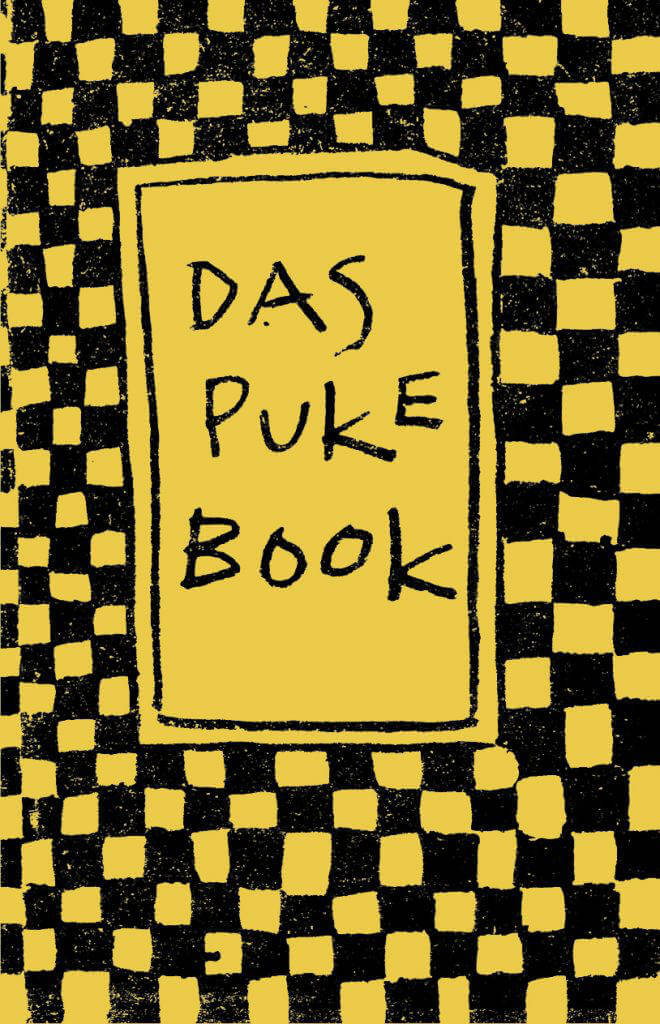
Martin Wong: Das Puke Book
Das Puke Book is a small chapbook self-published by Martin Wong in 1977. Written in the early 1970s, the publication contains thirteen chapters of handwritten micro-fictions filled with cringeworthy stories unfolding in San Francisco and beyond.
Subtitled Da Otto Biography of Otto Peach Fuzz, the publication is populated with a cadre of colorful characters, some of who are obscure underground figures such as George “Hibiscus” Harris from the Cockettes and Angels of Light and Rodney Price and Debra “Beaver” Bauer from Angels of Light, while others such as Paul Gauguin, Vincent van Gogh, and God, are more well known. Although lighthearted, Wong paints unforgettably vivid scenes, such as Van Gogh attacking Gauguin with a razor, Beaver eating so many hot dogs she explodes, and God coming to San Francisco only to find a notebook that makes him so sick to his stomach that he vomits endlessly until the world ends. Written during his days working on the flyers and theatrical backdrops for the Angels of Light Free Theater and published just before his move to New York, these stories capture Wong’s playfulness and the absurdist, kaleidoscopic milieu of the moment in which they were written.

Practical Performance Magic
What if, when a performance is described as “nothing short of magical,” it is not just a metaphor? Maija Hirvanen and Eva Neklyaeva wrote a book together exploring the techniques involved in creating and curating contemporary performances through practical magic.
Like feminist magic, performance magic is not inherited or exclusive, but learned and inclusive. Anyone can practice it.
This is a book of recipes and spills, based on lived experience, observations and bewilderments of both writers.
Concept and writing by Maija Hirvanen and Eva Neklyaeva Design: POMO Publisher: Friends of Physical Contemporary Art, in the frame of Performing Portals project Editing: Leah Whitman-Salkin Funded by Art Promotion Centre Finland

Who Are You Dorothy Dean?
The first book devoted to the late African American writer and actress, Dorothy Dean, one of the few prominent African American women of New York City's bohemian heyday, close to Andy Warhol and Robert Mapplethorpe.
This second release from Éditions 1989 features Dorothy Dean's unpublished writing and selected correspondence with Edie Sedgwick, Rene Ricard, and Taylor Mead, among other friends and artists. This volume also includes Dean's transcendent script of an unrealized film starring Factory actor, Ondine.
Lyrical, humorous, political, and brutally honest, Who Are You Dorothy Dean? is a tribute to one of the few prominent African American women of New York City's bohemian heyday.
Dorothy Dean (1932-1987) was an African American writer and actress. She entered the 1960s New York underground scene and quickly became one of its key, if overlooked, figures, starring in six of Andy Warhol's films and inspiring the likes of Robert Mapplethorpe and Robert Creeley. Presumably the first woman ever hired as fact-checker at The New Yorker, Dean held brief editorial and proofreading positions at publications such as Vogue before launching her very own bulletin of film reviews, the All-Lavender Cinema Courier, in 1976.
Edited by Anaïs Ngbanzo.
Texts by Dorothy Dean, Edie Sedgwick, Robert Creeley, Gerard Malanga, Rene Ricard, Taylor Mead, et al.
Translated from the English (American) by Rachel Valinsky.
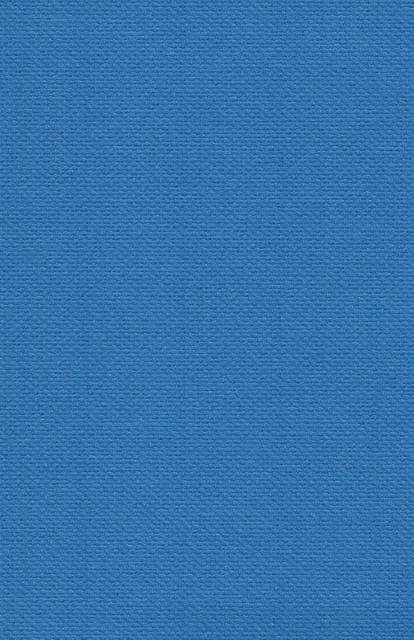
yksihW kcalB
The 15-year history of the production of a "German scotch" Black Whisky, made by Dexter Sinister together with Stahlemühle, a distillery set up by former publisher, Christoph Keller.
The story is told in reverse, starting with the delivery of 342 bottles to Berlin in 2022, and ending with an interview with Christoph for the journal Dot Dot Dot in 2007, during which the idea began to germinate. A summary of the project is accompanied by photographs taken at the time, interspersed with five previously published texts (an essay, three conversations, and a statement of intent) written along the way.
Dexter Sinister is the compound name of David Reinfurt and Stuart Bailey, collapsing together distinctions of editing, design, production and distribution into one efficient activity.

Zona Festival
This book traces the legacy of Zona, Eastern Europe performance art festival that took place in Timișoara, Romania, between 1993 and 2002, years which were marked by a transition from communism to a new society built on different principles.
Bringing together artists from the former "Eastern Bloc," Zona became a space of encounters, a platform for theoretical discussions and postmodern art experiments, which displayed a remarkable diversity of artistic languages. The fall of the Berlin Wall, as Nicolas Bourriaud noted in his book "The Radicant", was the first decisive step towards globalization and the generalization of postmodern thought.
In the early 1990s, adopting subversive strategies helped artists overcome critical moments in totalitarian societies, which had been consolidated for decades in Eastern Europe. They combined techniques of expression such as pastiche, quotes, historical images, popular culture, or subcultures with personal mythologies. What resulted was often a critical mixture with an explosive effect. Body art became an appropriate language for critically analyzing stereotypes about the nation, religion, gender, or social prejudices and taboos. Body art facilitated the transfer of ideas and a dialogue with the audience, or it helped launch questions about identity politics. The concerns and intentions of the festival's protagonists were built around political, social, and artistic topics that were debated between the East and the West.
Essays by Ileana Pintilie, László Beke, Vladimir Bulat, Robert Fleck, Alexandra Titu, Berislav Valušek; artists' texts by Alexandru Antik, Matei Bejenaru, Ștefan Bertalan, Geta Brătescu, Oskar Dawicki, Ion Grigorescu, H.arta Group, Karen Kipphoff, Liliana Mericioiu, Dan Perjovschi, Lia Perjovschi, Sorin Vreme.

Burn & Gloom! Glow & Moon!
Retrospective monograph: a journey through over two decades of intersectional and queering practices in film, performance, sculpture, community work, and textiles.
In Daschner's textile-based works, threads are minimal yet highly visible, akin to the pinch needed to wake up from a dream. These works—as well as her collages—merge with her confronting yet inviting image politics: she cuts and pastes stories of love and pleasure, violence and resilience, death and rebirth.
The written contributions reflect on Katrina Daschner as part of a hardworking generation of queer artists and makers who have been responding to the major conceptual shifts and gender upheavals happening in contemporary art since the 1990s, especially in New York and London. They highlight Katrina Daschner's longstanding line of intersectional queer interest that continues to undermine (neo-)liberal, heteropatriarchal conceptions of sexuality, gender, subjectivity, and relationships
Edited by Övül Ö. Durmuşoğlu.
Texts by Amelia Groom, Tim Stüttgen; foreword by Övül Ö. Durmuşoğlu; interviews by Rike Frank.
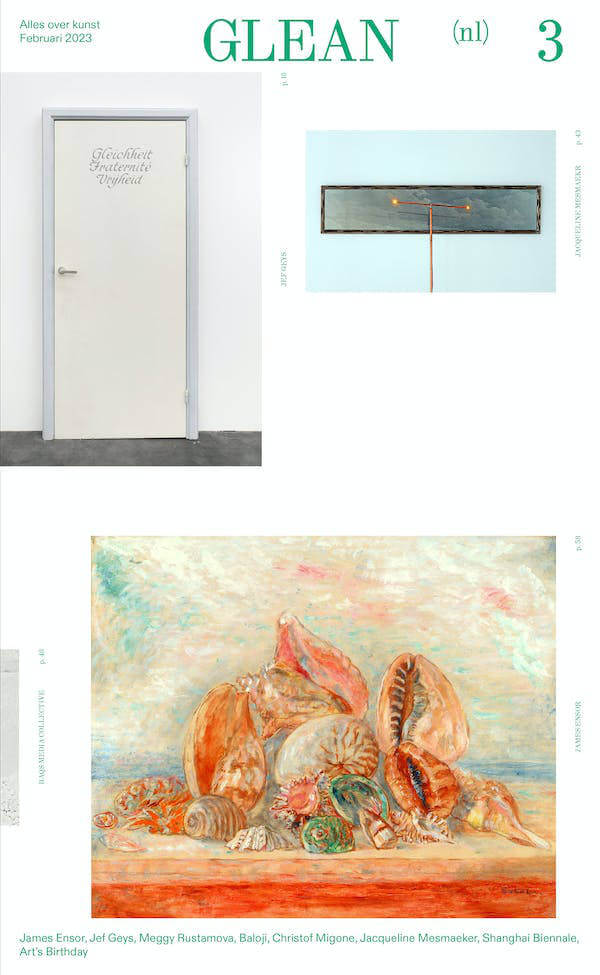
GLEAN - Issue 3 (NL edition)
De derde Nederlandstalige GLEAN editie.
Bijdrages over James Ensor, Jef Geys, Meggy Rustamova, Baloji, Christof Migone, Jacqueline Mesmaeker, Shanghai Biennale, Art's Birthday, en meer.
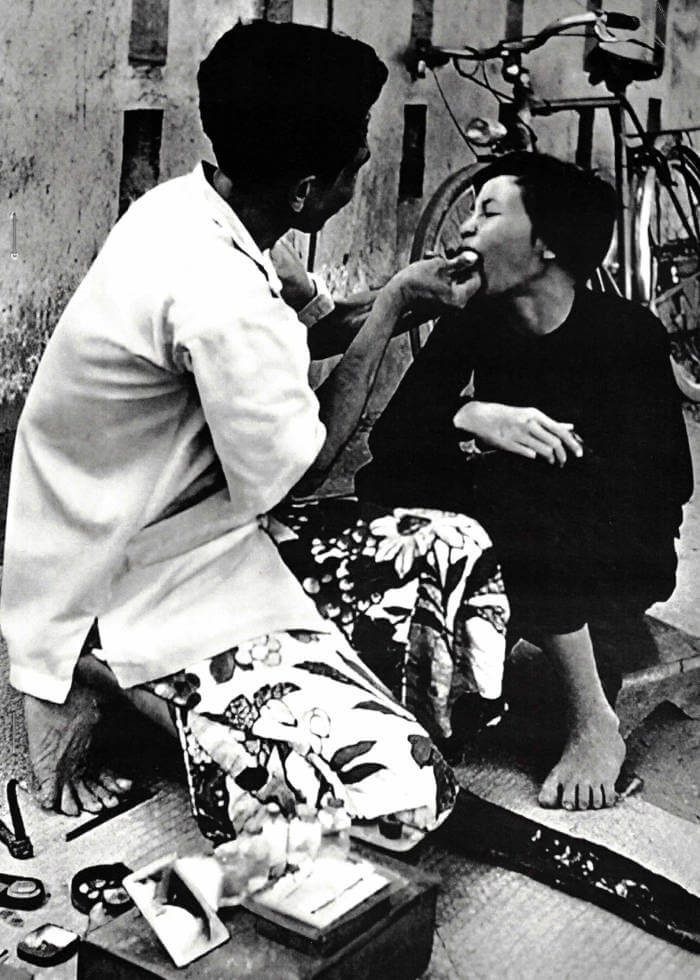
Teeth Surrounding a Flower in the Meanings
In ‘Teeth Surrounding a Flower in the Meanings’ a compilation of texts from the critical discourse surrounding his work, written by various authors between 2016 and 2023, serves as source material for a series of erasures.
Through retro- and introspectively reading into the works and the practice at large from poetic angles, these poems investigate the relation between art and its discourse, the words used, and their edges.
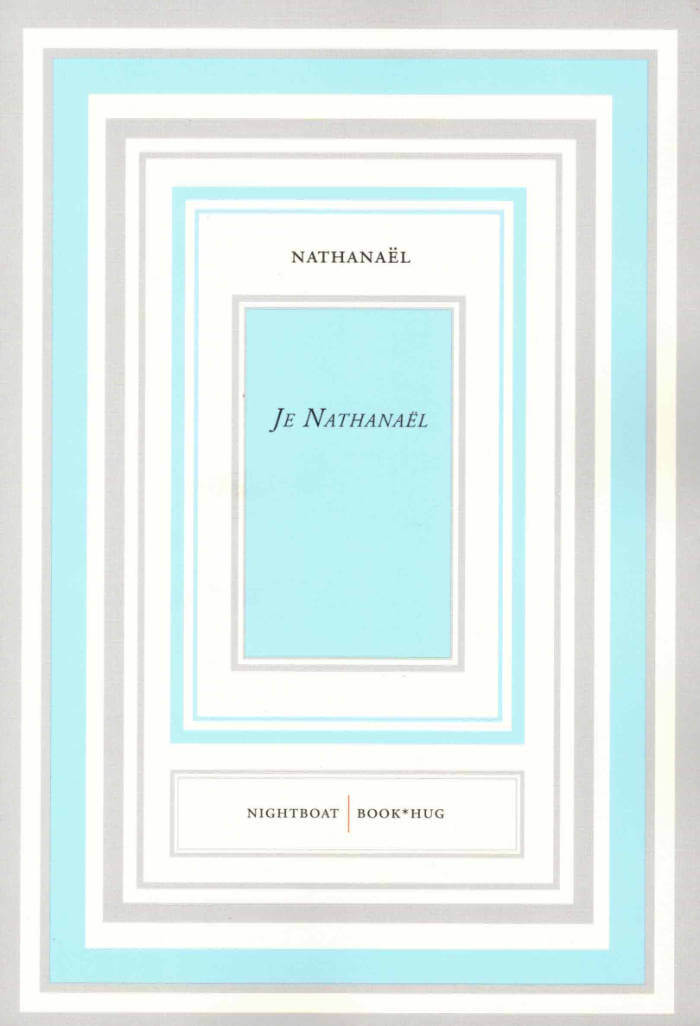
Je Nathanael
In Je Nathanaël, first published in 2006, Nathanaël explores ways in which language constrains the body, shackles it to gender, and proposes instead a different way of reading, where words are hermaphroditic and transform desire in turn. Suggesting that one body conceals another, it lends an ear to this other body and delights in the anxiety it provokes. With parts written in French, other parts in English, this is truly a hybrid text, throwing itself into question as it acts upon itself in translation. It is both originator and recipient of its own echo. In this regard it does not, cannot exist, pulling insistently away from itself in an attempt to draw attention to the very things it seeks to conceal. In this way, Je Nathanaël is a book of paradox, negating itself as it comes into being.

On the Table 6 – The Meal – A Conversation with Gilbert & George
Gilbert & George, Charlotte Birnbaum
Charlotte Birnbaum meets with Gilbert & George to discuss The Meal—a culinary performance organized in 1969 by the British duo, with David Hockney as the guest of honor. Also included here are photos and memorabilia from the singular event (the sixth publication in the On the Table series, that explore the encounter between food and art).
Gilbert & George never cook and always eat out. Back in 1969, however, the artist duo hosted The Meal, an elaborate dinner party that included thirteen guests, Princess Margaret's butler, a chef who prepared a meal from a Victorian cookery manual, and the guest of honor, artist David Hockney. While the art world of the time was largely characterized by Pop art, Minimalism, and Conceptual art, Gilbert & George developed an entirely unique philosophy and combined their daily lives with their artistic vision; in short, their art and life are one! Charlotte Birnbaum took a trip to London's East End to visit the immaculately dressed pair to discuss The Meal and other curious projects from their fifty-year collaboration. Also included here are photos and memorabilia from the singular event.

Walking loaves
An artist book by Luca Trevisani, overwriting in the mode of a palimpsest Piero Camporesi's Bread of Dreams, an Italian cult classic of "food" anthropology.
Walking loaves is a cannibalization of and tribute to Bread of Dreams, the masterpiece by Italian philologist, anthropologist, and literary critic Piero Camporesi. Originally published in 1980, Bread of Dreams is a book about bread as a cultural entity, about the baking practices and the rituals of the humans we have been, and the way we used to feed ourselves.
Seeking to crystallize in his sculptures the act of walking and the metamorphosis of the body, Luca Trevisani has dedicated several shoemaking exercises to bread—emphasized as a collective glue, material history, and biological writing.
After three years of plastic and editorial research on bread, Trevisani pays homage to Camporesi, grafting images of his works and handwritten notes onto its anastatic replica: a mutation grew in the crevices of another book with a gentle-aggressive gesture.
Luca Trevisani (born 1979 in Verona, lives and works in Berlin and Bologna) is one of the young Italian artists who came to prominence at the international level. His research ranges between sculpture and video, and cross border disciplines such as performing arts, graphics, design, cinema of research or architecture.

At the kitchen table
An exhibition guide for a multi-part show conceived by Reliable Copy in India, featuring a range of cookbooks, videos, and artworks around food, by a strong grouping of practices.
Approaching curatorial practice from the perspective of publishing, At the kitchen table looks at how food has historically been—and continues to be—inscribed through various conventional formats, as well as the channels and platforms by which it continues to circulate as material, trace, memory, and culture. Imagined as a show of documents, the exhibition brings together a selection of cookbooks, video works, and artworks.
The selection of cookbooks feature recipes and narratives compiled from artists and art-spaces, anthologies of recipes from literary fiction, cookbooks that function as historical records, and some that are self-published by individuals or community groups. The video works highlight and examine the well-worn format of the instructional cooking class and its associated performativity. Meanwhile, the artworks, which are presented via peripheral, referential, or stand-in documents, respond to (and often assume) the forms of the marketed consumable product, the stand-alone restaurant, the family archive, the recipe book, the menu, the assembly, and the feast.
The proposal, the script, the poster, the photographic documentation, the resource list, the newsletter, the Keynote presentation, and the audio recording—elements that are traditionally left out of the work's exhibition display, but that are often included in catalogues, monographs, or other publications around the work—become stand-ins for the artworks conceptually on display. Through this introduction of artworks via the documents that surround, engender, and represent them, the exhibition seeks to collapse the space between the exhibition and its documentation, the library and the gallery, and the event and its eventual publication.
At the kitchen table is imagined as a travelling, multi-part exhibition that will expand through its responses to the contexts, sites, and venues of its iterations, including those of a publication.
Works by Candice Lin, Carolyn Lazard, Chinar Shah & Nihaal Faizal, David Robbins, Fazal Rizvi, Gavati, Jason Hirata, Lantian Xie, Leone Contini, nonfood, Pushpamala N, Rajyashri Goody, Rasheed Araeen.
Books by Abby Lloyd, Archana Pidathala, Enid Blyton, Esther David, Felicity Dahl & Josie Fison, Filippo Tommaso Marinetti, Happy Potato Press, Mrinalini Bordawekar, Norah M. Titley, S. Meenakshi Ammal, Salvador Dali, Studio Olafur Eliasson, Suresh Jayaram.

Human Pelvis, Bitter Radish
This publication features a project by Leone Contini looking into the canned food available during the war of Caporetto in 1917 and especially its iconography. It brings together an essay by the artist along with reproductions of a selection of his drawings.
Leone Contini (born 1976 in Florence) studied philosophy and cultural anthropology at the University of Siena. His research unrolls at the intersection of anthropology, aesthetics and politics and his mediums include lecture-performances, collective interventions in public spaces, textual and visual narratives, drawings. His research is focused on intercultural frictions, conflict and power relations, displacement, migrations and diasporas, aiming to investigate, to question and to re-shape identity patterns and power relations.

The 1Shanthiroad Cookbook
The 1Shanthiroad Cookbook brings together a collection of recipes from the community kitchen of 1Shanthiroad Studio/Gallery, compiled and edited by the space's founding director, Suresh Jayaram.
Featuring recipes from over 70 contributors, including artists, curators, patrons, residents, and the extended family of friends of 1Shanthiroad, the cookbook serves as a portrait of an evolving cultural community. Emerging from and responding to the history and legacy of 1Shanthiroad - Bangalore's oldest running non-profit residency and arts space - the cookbook frames the kitchen as integral to the site and function of the space, mapping recipes across generations, cultures, and timelines, while anchoring itself in the cultural history of the wider city.
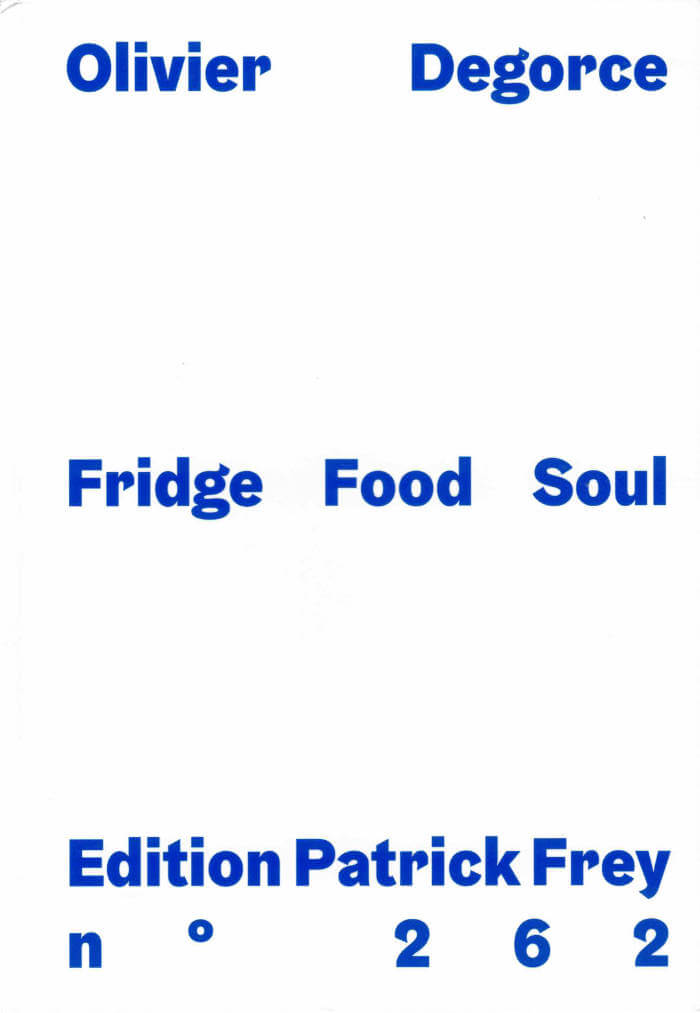
Fridge Food Soul
Photographer Olivier Degorce brings together a series of fridge photographs shot from 1993 to 2017: Beyond the obsessive nature of the project lies the sheer diversity of individual eating habits in the form of contemporary still lifes.
The photographs presented in Fridge Food Soul were shot from 1993 to 2017, for the most part on the spur of the moment, using all sorts of analog and digital devices ranging from the most sophisticated to the most rudimentary cameras. In most cases he took only one shot of each fridge. The serial collection of these snapshots in a single book testifies to the systematic, even obsessive, nature of this project.